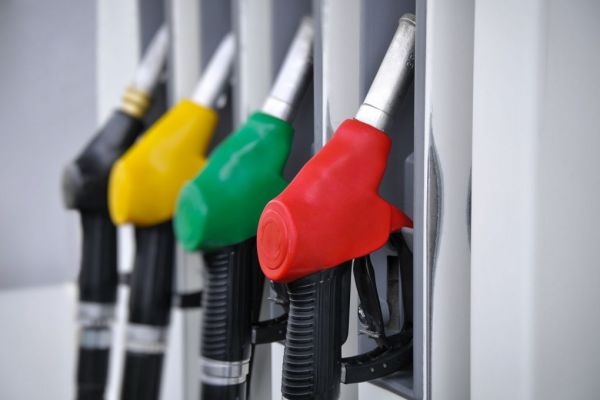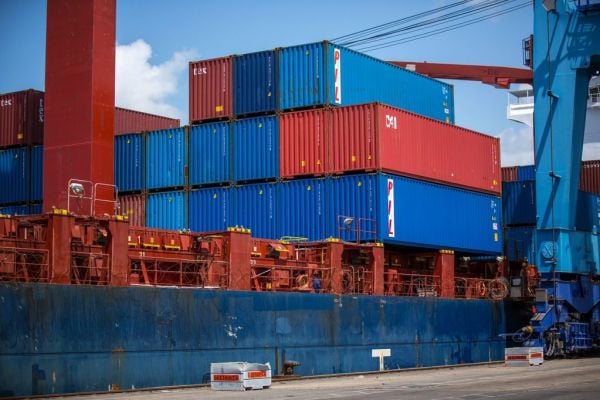Fears about a shortage of diesel and other middle distillates stemming from new marine pollution regulations have receded, with distillate premiums falling to some of the lowest levels for two years.
From the start of 2020, ocean-going ships will be required to use low-sulphur fuels or employ exhaust gas cleaning systems, known has scrubbers, under pollution control rules approved by the International Maritime Organization (IMO).
Fuel traders and shipowners have warned for several years that the switch from high-sulphur fuel oil (HSFO) to low-sulphur fuel oil (LSFO) or marine gasoil (MGO) could lead to shortages and rising prices.
Marine gasoil is refined using similar processes to other mid-distillate fuels such as diesel and jet kerosene, widely in use by trucking firms, railroads, airlines, oil and gas drillers and farmers.
Gasoil shortages could push up fuel prices for other users, with higher costs passed on to manufacturers and consumers, the U.S. Council of Economic Advisers warned in March.
"The shortfall will likely trigger higher prices, though estimates of price shocks to fuels including diesel, gasoline, and jet fuel vary widely," the Council wrote in its annual report.
"U.S. fuel consumers may pay higher prices in the medium term as a result," the Council said ("Economic Report of the President", CEA, 2019).
In the event, however, stocks of gasoil and other middle distillates have remained comfortable and there has been little pressure on refining capacity to make them. The predicted marine fuel crisis has failed to materialise.
Stable Prices
Gasoil futures prices for fuel delivered over the course of 2020 are around $17 per barrel higher than Brent, down from $19 at the same point last year, and show no sign of pressure on fuel supplies.
Gasoil futures are trading in a backwardation, but the six-month calendar spread is not especially large by the standard of the last 10 years and is narrower than the backwardation in Brent.
Hedge funds are no longer anticipating a severe shortage of middle distillates in the near term, according to position reports published by ICE Futures Europe and the U.S. Commodity Futures Trading Commission.
Hedge funds and other money managers are running a net bullish position of just 8 million barrels in U.S. diesel and 29 million in European gasoil – down from 25 million and 69 million barrels respectively at the same time last year.
Portfolio managers are still betting on a rise rather than a fall in distillate prices, with bullish long positions outnumbering bearish short ones by a ratio of 1.6:1.
But they are less bullish about distillates than about crude (where the long-short ratio in futures and options is 3.7:1) or U.S. gasoline (where the long-short ratio is 9.0:1).
Crisis Averted
Distillate consumption is closely correlated with the economic cycle, so the slowdown in global manufacturing and trade during 2018/19 has taken much of the predicted heat out of the distillate market.
If the global economy had been growing strongly at this point, distillate consumption would have been significantly higher and a price spike would have been much more likely.
Instead, the trade war between the United States and China and the resulting global slowdown has created more headroom to introduce the new fuel standards without risking a fuel shortage.
Refiners have also proved more adept than some analysts predicted at boosting their output of marine gasoil and low-sulphur fuel oil ("Global refiners raise cleaner shipping fuel output ahead of IMO 2020", Reuters, 20 November.)
New pollution regulations are almost always accompanied by warnings about shortages and costs, which often turn out to be exaggerated.
Similar alarm was expressed prior to the introduction of clean air zones in Britain, smokestack sulphur controls in the United States and the phaseout of leaded gasoline.
In most cases, energy producers can ensure a smooth transition, given enough time to adapt, a clear deadline and financial incentives to invest in new equipment.
Fuel Available
Four years ago, the International Maritime Organization's own analysis concluded there would be sufficient refining capacity and desulphurisation units to meet the increased demand for low-sulphur fuels in 2020.
The IMO's consultants examined the impact on low-sulphur fuel demand from the economic cycle, shipbuilding and the choice between fuel switching and using scrubbers.
"In all scenarios, the refinery sector has the capability to supply sufficient quantities of marine fuels... while also meeting demand for non-marine fuels," they concluded ("Assessment of fuel oil availability", IMO, 2016).
So far, that judgment has proved correct.
News by Reuters, edited by Donna Ahern Checkout. Click subscribe to sign up for the Checkout print edition.









